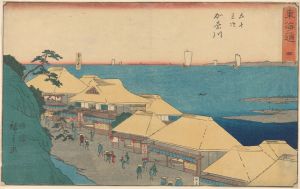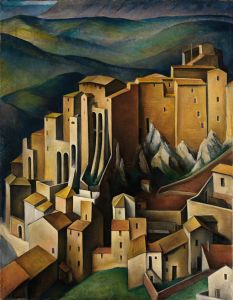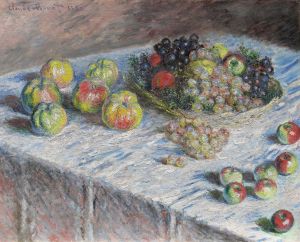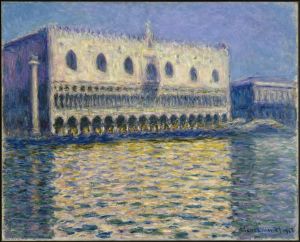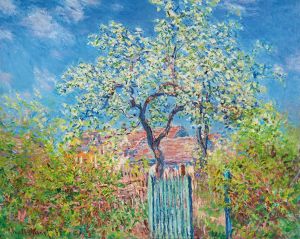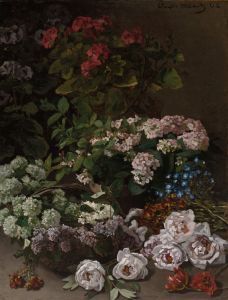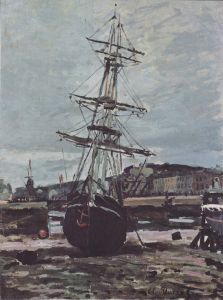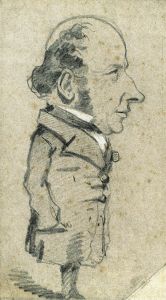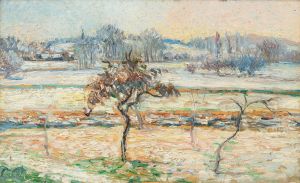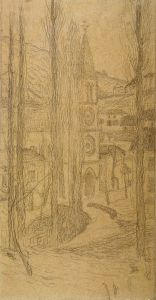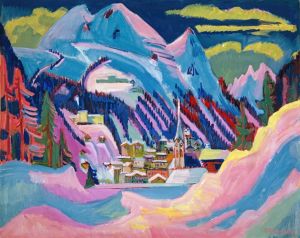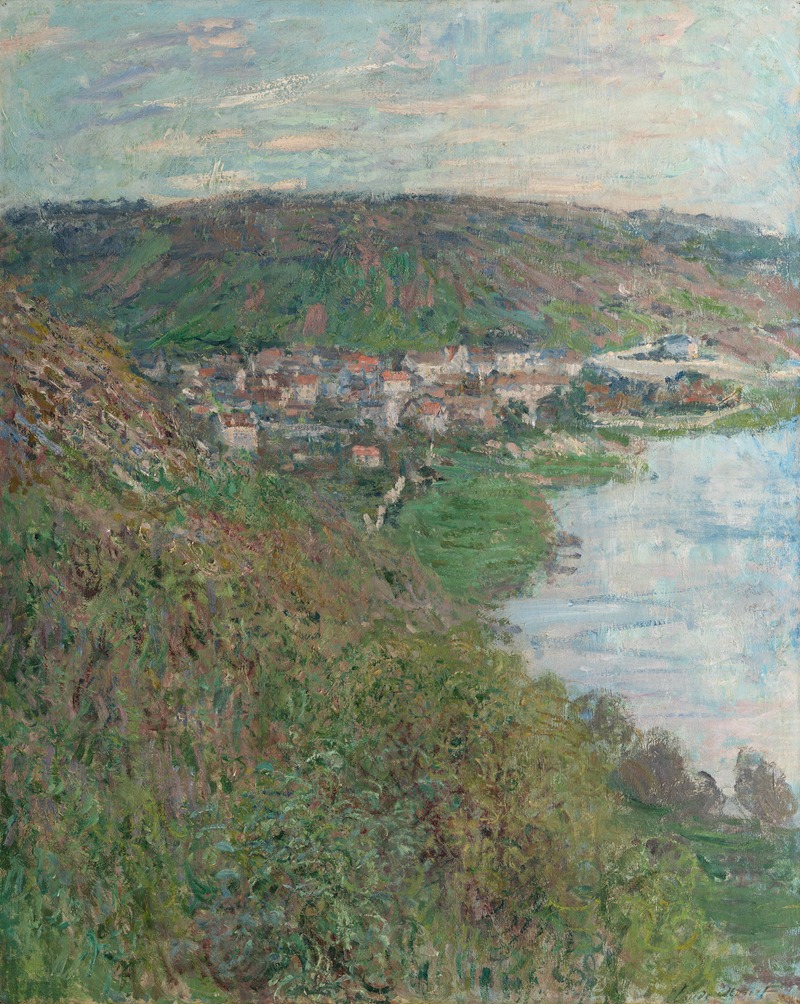
View of Vétheuil
A hand-painted replica of Claude Monet’s masterpiece View of Vétheuil, meticulously crafted by professional artists to capture the true essence of the original. Each piece is created with museum-quality canvas and rare mineral pigments, carefully painted by experienced artists with delicate brushstrokes and rich, layered colors to perfectly recreate the texture of the original artwork. Unlike machine-printed reproductions, this hand-painted version brings the painting to life, infused with the artist’s emotions and skill in every stroke. Whether for personal collection or home decoration, it instantly elevates the artistic atmosphere of any space.
View of Vétheuil is an oil painting created by the French Impressionist artist Claude Monet in 1880. This artwork is one of many that Monet painted of the village of Vétheuil, located along the Seine River in northern France. Monet lived in Vétheuil from 1878 to 1881, a period marked by both personal hardship and artistic growth. During his time there, he produced numerous paintings capturing the village, the surrounding landscape, and the river, often exploring the effects of light and atmosphere on the scenery.
The painting depicts a view of Vétheuil as seen from across the Seine. Monet's characteristic Impressionist style is evident in the loose, fluid brushstrokes and the emphasis on capturing the fleeting effects of light and color. The composition highlights the village's church, which rises prominently above the cluster of houses, with the river in the foreground reflecting the sky and the surrounding environment. The use of soft, harmonious colors creates a serene and atmospheric scene, showcasing Monet's mastery in portraying natural light and its interaction with water and architecture.
During this period, Monet was experimenting with plein air painting, a technique that involved working outdoors to directly observe and capture the changing qualities of light and weather. This approach allowed him to create works that conveyed a sense of immediacy and vibrancy, qualities that are evident in View of Vétheuil. The painting is also an example of Monet's ability to balance detail with abstraction, as the forms of the village and the landscape are suggested rather than meticulously defined.
Monet's time in Vétheuil was marked by financial difficulties and personal tragedy, including the death of his wife, Camille Doncieux, in 1879. Despite these challenges, his work from this period reflects a deep engagement with his surroundings and a commitment to exploring the possibilities of Impressionist techniques. View of Vétheuil is one of many paintings that document Monet's fascination with the village and its picturesque setting.
Today, View of Vétheuil is recognized as an important example of Monet's work during the late 19th century. It is housed in the National Gallery of Art in Washington, D.C., where it is part of the museum's extensive collection of Impressionist art. The painting continues to be celebrated for its beauty, technical innovation, and its role in the development of Monet's artistic vision.





